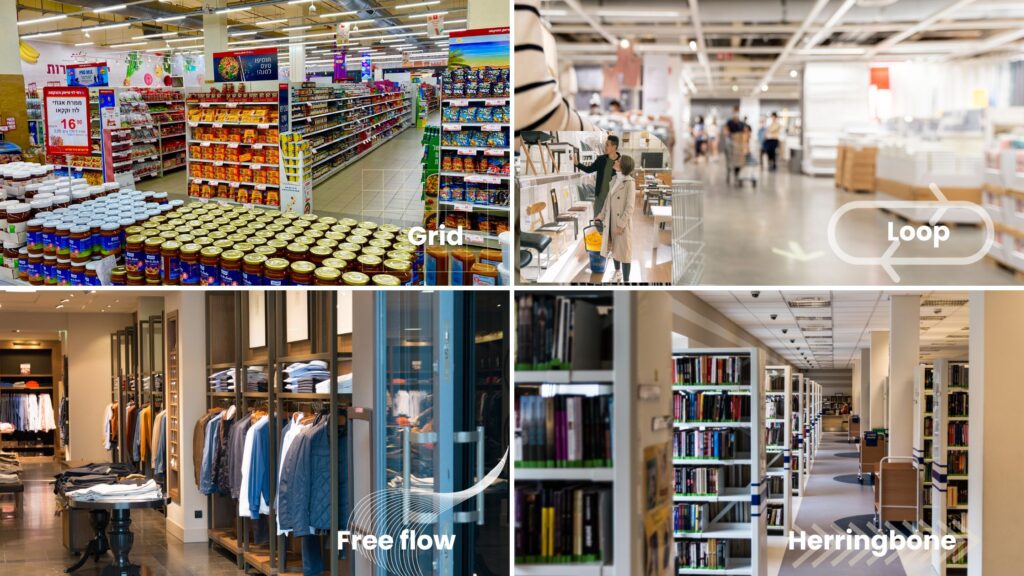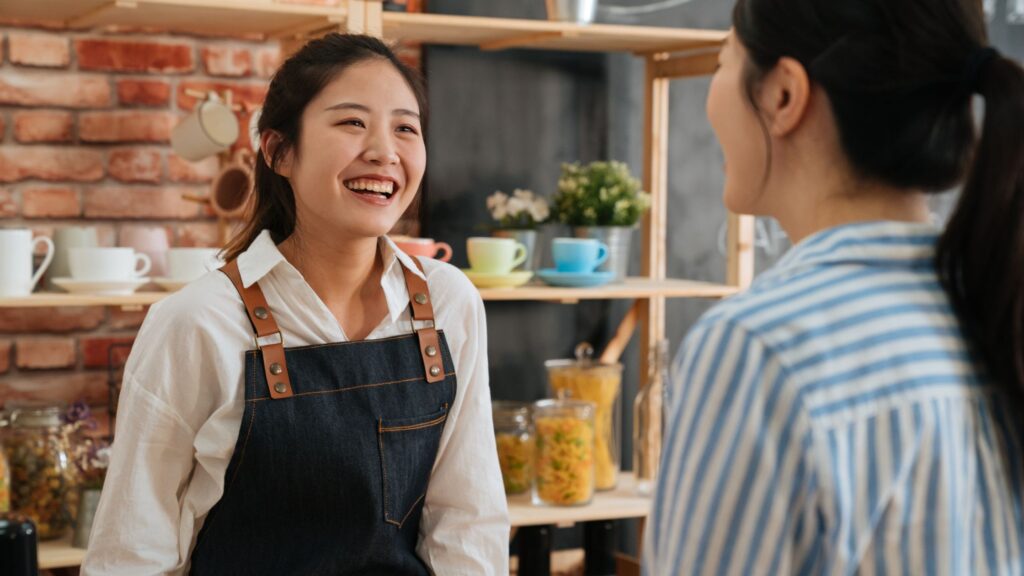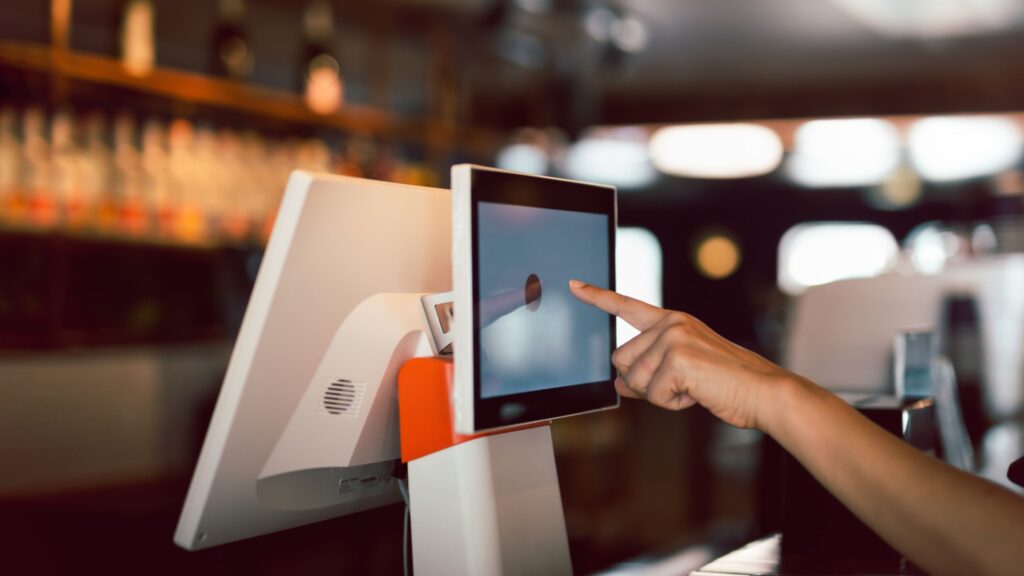Increase the time customers stay in your store and boost your revenue
Whether it’s a giant superstore, international chain or local independent retailer, you want your customer to enjoy their experience in your store and encourage them to spend time browsing your products, not just the one they came in for.
Think of your favourite store. Is it solely the product that makes you love spending time there? Or do you enjoy the store layout and decor too? Emotion plays a big part in our shopping behaviour and in-store retailers have the added advantage of being able to create more opportunities to impulse buy with a great and immersive shopping experience to inspire and emotionally connect with shoppers, keeping them in store for longer browsing for other products.
Let’s explore the ways to create a positive environment that can increase the time spent in-store affecting more sales conversions.
Optimise the layout and design of your store
The layout is the path that takes shoppers through the store guiding them and showcasing the merchandise. Customers want a clear path to easily find what they are looking for, picture most stores when you enter — the front acts as a decompression zone, empty or clear, helping customers transition into the store and inviting them to explore more.
Retailers need to balance making products easy to find while encouraging customers to view and discover more products — creating an immersive shopping experience to inspire and find new ideas and products is one way that retailers can increase the time spent and boost revenue.

Typical types of store layouts include:
- Grid – long rectangular aisles easy to navigate and popular with pharmacies and supermarkets.
- Loop, or racetrack – controls the flow of customers and forces them to walk past all products before they exit, think Ikea!
- Free-flow – while this can give retailers a chance to channel their flair for creativity and allows customers to move around freely, creating unique displays for products, it can also become confusing if ill designed and so retailers need to consider clear signage and common behavioural trends of shoppers.
- Herringbone – similar to the grid layout, for small and narrow spaces, local book stores and hardware stores often use this layout. (May need investment in cameras as not all areas are clearly visible).
Branding, design and ambience
The design and ambience should reflect your brand and create an inviting atmosphere to enhance the shoppers experience. The last thing they want is a cluttered shop floor where items are difficult to find and the signage is confusing or non-existent.
Lighting and music have a big impact on the aesthetics of a business. They also have a powerful effect on our psychology and can change our moods and behaviour.
The lighting in a store helps to enhance the features of a product and there are different types to consider these include: task lighting to enable staff and customers to carry out necessary tasks and concentrate. Ambient lighting is the main lighting in the store which sets the tone and brand identity. Accent lighting helps to pick out particular products and displays to attract the customer and draw attention to them. Decorative lighting to add ambience and enhance the design of the store, this can also affect the moods and behaviour of customers.
Music (just like scents) has a powerful effect on our psychology and can change our moods and behaviour. Research has found that musical choices in store can produce specific buying behaviour. Slow music encourages people to stay and browse, faster music leads to people moving through the store faster. Familiar music encourages people to move quickly.
Tailor music to your brand e.g. high-end browsing, lower tempo. If retail is more dependent on a high customer turnover they will play music with a faster tempo and more familiar or current music. Familiar music can make people feel as though they have spent less time in the queue!

Staff are crucial to the customer experience
It is vital to spend time training staff from when they come onboard and throughout their employment. They reflect your brand and need to be experts and knowledgeable about the products, services and processes you provide. Staff should always be up-to-date and feel empowered to answer questions and solve problems in order to provide excellent customer service.
As shoppers we have all been approached as soon as we walk through the door with “Can I help you?” But is this the most effective way? How many times do we immediately reply with something along the lines of, “No thanks, I’m just browsing” ending the conversation.
Acknowledging a customer when they first enter the store is a great first impression, without making them feel ignored or jumped on. Don’t be afraid to follow up once they have started browsing from: “How’s your day going?”, “Who are we shopping for today?” to, “I love this new stock that arrived today, what do you think? It would be great to get your feedback”.
Nurture relationships with repeat customers and actively listen to them. Train staff on cross promotion, how to identify products that complement each other to show shoppers. Customers value personalisation, so consider implementing customer loyalty programs and special events that will also alert sales staff to customers preferences so that they can alert them to promotions.

Can tech help retail staff spend more time with customers?
Rising wholesale prices and staff shortages are just some of the challenges retailers are working to overcome. One solution that is increasingly being used is the introduction of new technology in stores, these include:
- Automation – one example is automating stock and inventory management to free up staff time from these types of tasks. Retailers are able to scan and search for products, update and review information, and have up-to-date stock counts. They can receive notifications and run reports for insights into stock levels knowing how fast products are selling and when to reorder them.
- Portable POS terminals – staff on the shop floor are on hand to answer questions about products including stock availability and can take payments, easing queues at the checkout.
- QR and barcodes on products and shelves is an accelerating trend that many retailers can use to provide customers browsing in store more information about a product direct to their phone. This trend is most common in the hospitality industry, with QR code menus on tables giving customers the option to order food and drinks via their mobile phone. Booop’s technology works in this way to help customers to discover more information about a product and to even purchase it directly via their phone with Booop & Go™.
Retailers that are adopting technology and automated processes in their stores are providing their customers with a hybrid shopping experience that combines physical stores face-to-face interaction with the efficiency of e-commerce. Shoppers get a seamless and personalised shopping experience. By providing tech systems in-store retailers can relieve pressure on their sales assistants, and empower customers to find out more about products they stock without having the all too common frustration of seeking out and waiting for a customer service representative to become available.